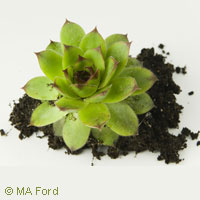Annual plants transformed to perennials
Scientists from Belgium and the Netherlands have not only discovered the genes that make plants flower but have successfully deactivated them. The implications of their research are far reaching: it may be possible to grow plants for significantly longer periods of time than is currently possible. The findings, published online in the journal Nature Genetics, also provide insight into the evolution of herbaceous plants. Plants can be categorised botanically according to their lifespan. Annuals, for example, usually have a lifespan of one year. During this year they germinate, grow and flower just before dying, releasing seeds that will ensure the continuation of their species. Some biennials, such as beetroot, live for two years but are grown as annuals for practical reasons. Perennials have a much longer lifespan, surviving for several years. The scientists hypothesised that the molecular difference between perennials and annuals might be rather small. According to the study, plants have evolved into either annual or perennial life forms in order to ensure their reproduction and survival under different environmental constraints. For example, woody perennials have evolved repeatedly from annual ancestors in isolated situations, such as on islands. Annuals expend considerable energy on developing flowers, which is essential to the continuity of their species. The seeds of annuals are highly sensitive, and are able to sense the lengthening of days and the end of winter. This in turn triggers the growth process. With the advent of longer days in the spring, a signal is sent that activates a number of bloom-induction genes. The current study examined these 'blossoming' genes in the thale cress plant, a flowering species native to Europe, Asia and northwest Africa that has a short lifespan. They switched the genes off, which allowed the cress to continue growing and lengthened its lifespan considerably. The researchers successfully determined the specific factors responsible for controlling flowering time, secondary growth prevention and longevity in the annual plant, and confirmed their hypothesis that the difference between annuals and perennials is quite small. They witnessed that, in addition to increasing the plant's lifespan, switching off the genes caused other perennial-like behaviours such as secondary growth, with wood formation transforming the cress into a shrub-like plant. Additionally, they found that switching off the genes in the cress caused the plant to retain some of its store of non-specialised cells, which are normally used to assist flowering before the plant dies; this enabled the plant to grow as a perennial, thus surviving for a much longer time. Botanists have determined that woody perennials evolved from annual herbaceous plants; the current study has established the key role of three genes in this process. The findings have implications for both agriculture and evolutionary biology.
Countries
Belgium, Netherlands



